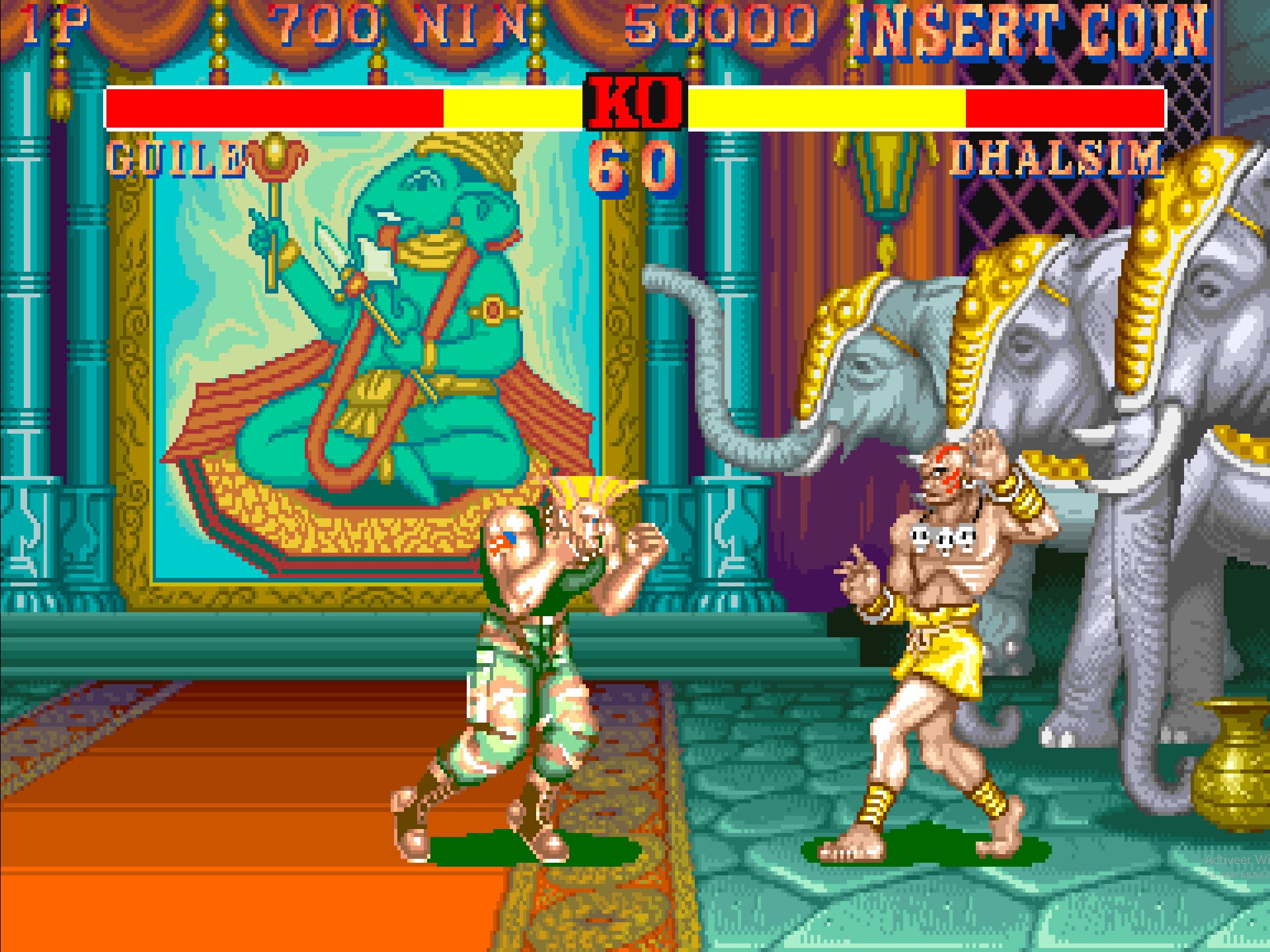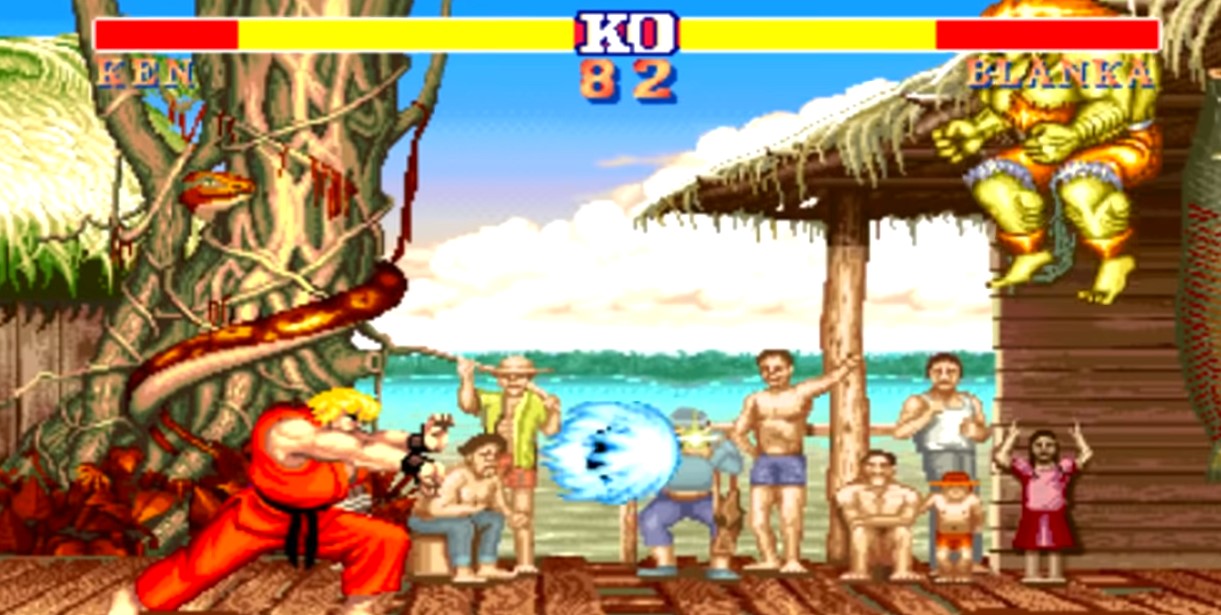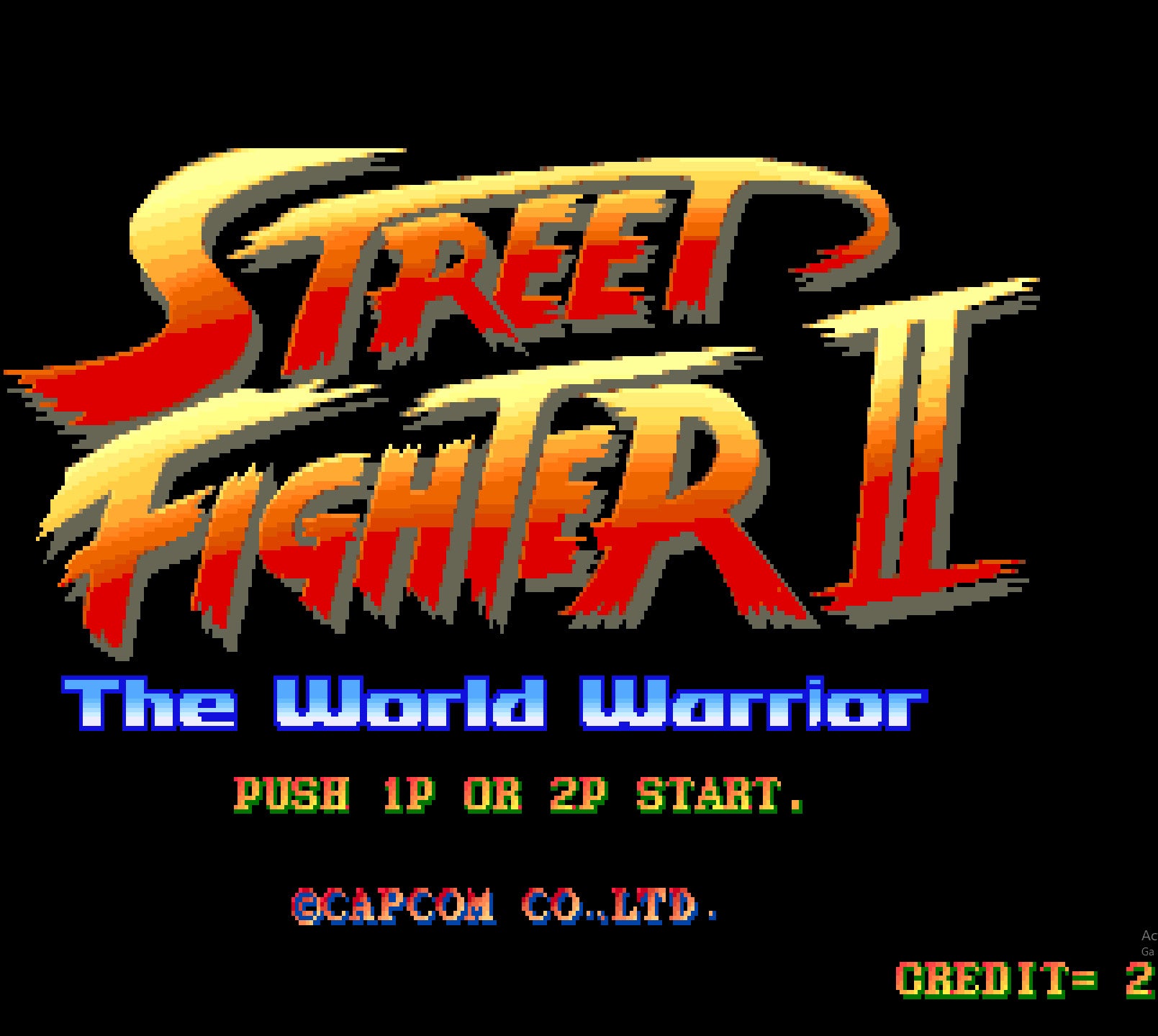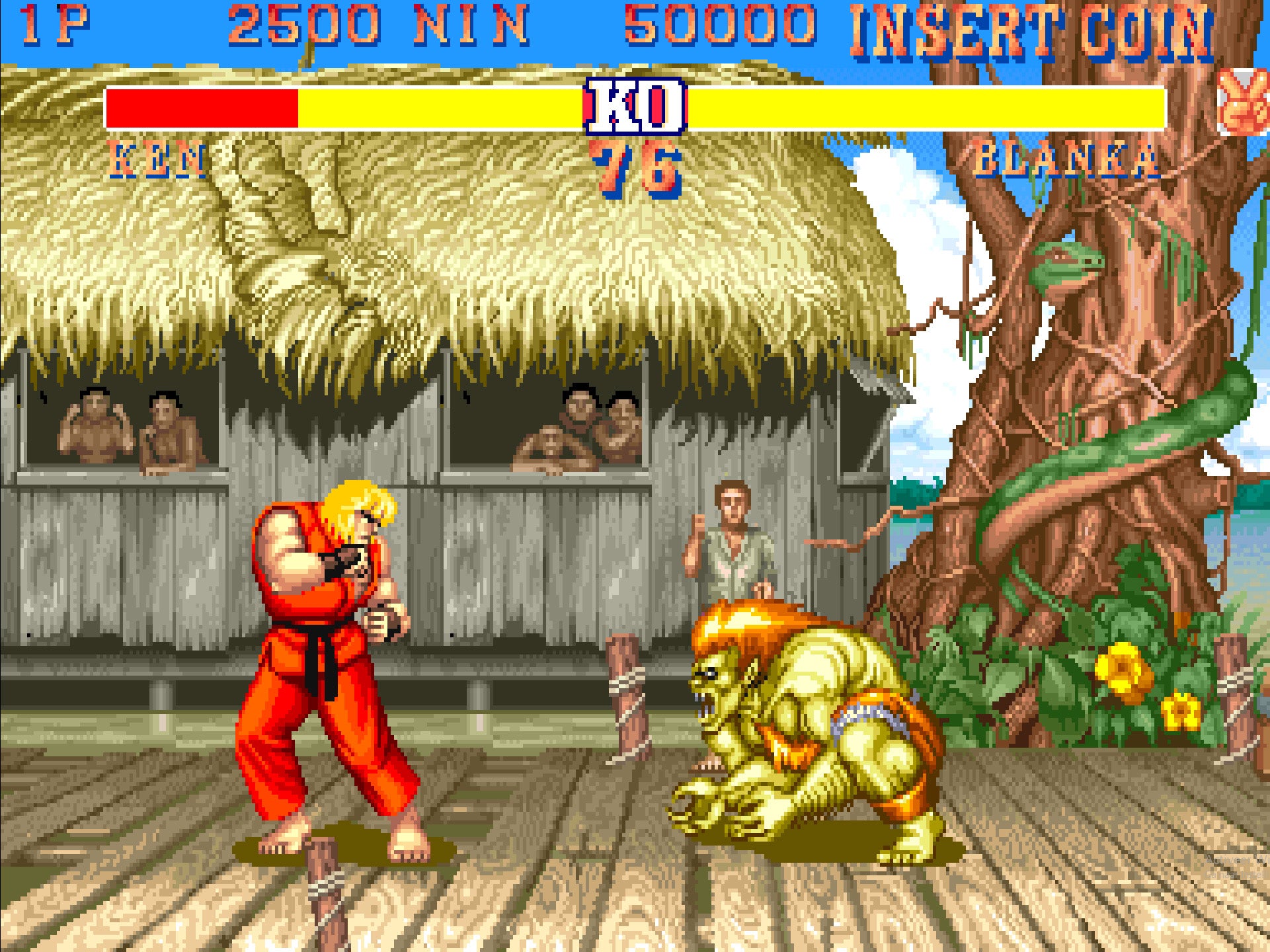Introduction
Released in 1991 by Capcom, Street Fighter II is widely regarded as one of the most influential arcade games of all time. It set a new standard for fighting games with its detailed character roster, iconic moves, and innovative mechanics. The game’s success not only helped shape the fighting game genre but also revolutionized the entire arcade industry. Known for its fluid combat system, memorable characters, and competitive gameplay, Street Fighter II became a cornerstone of arcade gaming and continues to be celebrated as one of the greatest video games ever made.

History and Development
Street Fighter II was developed and published by Capcom and was the sequel to the original Street Fighter arcade game. While the first game was relatively limited in its mechanics and characters, Street Fighter II introduced revolutionary features that set it apart from anything that came before it.
Designed by Yoshiki Okamoto and the Capcom development team, Street Fighter II brought together an expanded roster of characters, each with unique moves and abilities. This allowed players to experience different playstyles and strategies, as they could choose from a variety of characters that each brought something special to the table. The game’s balance, depth, and competitive nature made it an instant hit in arcades and helped lay the foundation for future fighting games.

Street Fighter 2 Gameplay Video
Gameplay and Objectives
In Street Fighter II, players control one of eight unique characters, each with their own moves and special abilities. The objective is simple: defeat your opponent in a series of rounds by depleting their health bar using punches, kicks, and special moves.
Key Gameplay Features:
- Character Selection: Street Fighter II introduced a diverse cast of characters from different countries, including Ryu, Ken, Chun-Li, Blanka, Zangief, Guile, Dhalsim, and E. Honda. Each character has their own set of moves, strengths, and weaknesses, making it possible for players to develop different strategies depending on their choice.
- Special Moves: Each character has a set of unique special moves, which require specific button combinations to perform. These moves can deal significant damage and are a key part of the game’s strategy.
- Round-Based Combat: Matches are typically played in a best-of-three format. Each round is won by depleting the opponent’s health bar, and the player with the most rounds won takes the match.
- Combo System: One of the game’s key features is the ability to perform combos, where multiple attacks are linked together in quick succession. This added depth to the gameplay and allowed for greater strategy and creativity in how players approach each fight.
- Super Combos (Later Versions): In certain versions of the game, characters also gained access to Super Combos, devastating finishing moves that could deal massive damage.
Tip for Players: Mastering the timing and execution of special moves and combos is crucial to becoming a top player. Experiment with different characters to find the one that best suits your playstyle.

Unique Features and Gameplay Mechanics
Street Fighter II revolutionized the fighting game genre with several innovative features that are now standard in modern fighting games.
Key Innovations:
- Diverse Roster of Characters: The game’s diverse roster of eight playable characters, each with a unique fighting style and special moves, was groundbreaking. This level of character variety had never been seen before in fighting games.
- Special Move System: The introduction of special moves that could be performed by inputting specific button combinations was a game-changer. This allowed for deeper, more skill-based gameplay and became a defining feature of the series.
- Combo System: The ability to chain attacks into combos was an innovation that added a new layer of strategy to the gameplay. Players who mastered the combo system could execute devastating attacks and maintain offensive pressure.
- Two-Player Mode: For the first time, Street Fighter II featured a two-player versus mode, allowing players to face off against one another in direct competition. This competitive mode became hugely popular and is one of the reasons why the game became a cultural phenomenon.
- World Tournament Feel: The game introduced the idea of world travel with characters from different countries, each with their own fighting styles, personalities, and storylines. This added an international flair to the game and made it feel like a global competition.

Strategies for High Scores
- Master Your Character’s Moves: Each character has a unique set of moves. Mastering these moves and understanding how to use them in different situations is key to winning matches. Special moves like Hadoken and Spinning Bird Kick can often turn the tide of battle if used strategically.
- Learn Combos: Combos are crucial for scoring big points and dealing massive damage to your opponent. Learn the timing and positioning for each character’s combo to maximize your effectiveness in battle.
- Counter Your Opponent: Each character has strengths and weaknesses. Use your character’s unique abilities to exploit your opponent’s weaknesses. For example, Dhalsim’s long-range attacks can keep opponents at bay, while Zangief’s close-range grapples can overpower opponents who rely on distance.
- Timing and Patience: Street Fighter II requires good timing and patience, especially when facing tough opponents. Wait for the right moments to strike and don’t rush your attacks.

Video on Restoration of Street Fighter 2 Arcade
Legacy and Player Reception
Since its release, Street Fighter II has become one of the most iconic and influential fighting games in history. Its success in arcades helped to establish the fighting game genre, and its competitive nature set the stage for countless sequels, spin-offs, and esports tournaments. The game’s popularity also led to its release on various home consoles, where it continued to captivate a wider audience.
Community Feedback:
- Players Appreciate: The game’s balance, the diversity of characters, and the depth of strategy required to succeed. The competitive nature of the game, especially in multiplayer mode, has made it a staple in arcade gaming.
- Critics Note: Some players may find the game challenging at first, but once they get the hang of the moves and combos, the game becomes highly rewarding.
Awards and Recognition: Street Fighter II is often listed among the greatest video games of all time. Its influence can be seen in modern fighting games, and it remains a popular choice in arcades and home consoles.

Fun Facts
- Famous Character Designs: The game introduced some of the most iconic characters in gaming history, such as Ryu, Ken, Chun-Li, and Guile, each of whom became enduring symbols of the Street Fighter series.
- Cultural Impact: Street Fighter II had a massive impact on popular culture and helped shape the fighting game community. It was one of the first arcade games to feature competitive tournaments, and it spawned an entire genre of fighting games.
- Re-releases and Spin-offs: Since its original release, Street Fighter II has been re-released on various platforms and in multiple versions, each with new characters, balance changes, and gameplay features.

Conclusion
Street Fighter II is a groundbreaking arcade game that set the standard for fighting games for decades. Its diverse character roster, innovative gameplay mechanics, and competitive multiplayer mode made it a hit with players worldwide. Whether you’re a casual player or a competitive fighter, Street Fighter II offers a thrilling experience that continues to captivate gamers today.
Explore More:
Enjoy retro games? Check out our guides on Mortal Kombat II, Galaga, and Pac-Man to dive deeper into the world of arcade games!
Questions you might have:
How does the gameplay of "Street Fighter II" differ from the original "Street Fighter" game?
"Street Fighter II" introduced a diverse roster of playable characters, improved controls, and special move inputs, significantly enhancing the gameplay experience compared to the original "Street Fighter."
Who are the main characters in "Street Fighter II," and what are their unique abilities and special moves?
The main characters include Ryu, Ken, Chun-Li, Guile, and more. Each character possesses unique abilities, fighting styles, and signature special moves like Ryu's Hadouken and Guile's Sonic Boom.
What are the different versions and iterations of "Street Fighter II," and how do they vary from each other?
"Street Fighter II" saw multiple iterations, such as "Street Fighter II: Champion Edition" and "Street Fighter II Turbo." These versions introduced new features, balancing changes, and additional characters.
What is the significance of "Street Fighter II" in the fighting game genre and the history of video games?
"Street Fighter II" revolutionized the fighting game genre, setting the standard for competitive one-on-one fighting games and influencing the design of future titles.
Were there adaptations or releases of "Street Fighter II" on home consoles and other platforms?
Yes, "Street Fighter II" was adapted and released on various home consoles, including the Super Nintendo Entertainment System (SNES) and Sega Genesis.
What is the legacy of "Street Fighter II," and how does it fit into Capcom's history and the broader gaming industry?
"Street Fighter II" is hailed as one of the most influential and iconic games in video game history, shaping Capcom's legacy and leaving an indelible mark on the evolution of fighting games and gaming culture.

